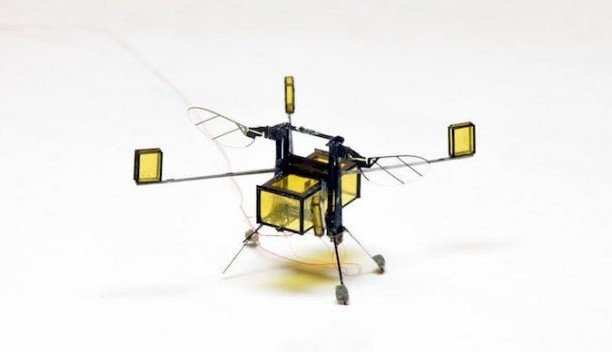RoboBee can do everything a flying insect can
on


(Harvard University).
Already for more than 10 years, researchers from Harvard University have developed autonomous flying microrobots for use in, among other things, agriculture and search-and-rescue operations. These so-called RoboBees are inspired by the biology of an Anthophila, and can fly, cling to walls and dive under water.
However, a new generation of autonomous flying microrobots now performs better than their brothers and sisters, thanks to the addition of an internal combustion system that powers the tiny robot from the water and into the air.
Surface tension of water
According to the researchers from the Wyss Institute, this is the first microrobot that is capable of repeated movement through complex environments. Because water is 1000 times more dense than air, researchers had to determine the perfect wing ratio and wing speed (220-300 Hz in air, 9 to 13 Hz in water) and in addition had to find a way for their bees to break through the surface tension of the water, in order to fly back.
To solve this problem, the researchers fitted to RoboBee with four floats and a central gas collection chamber. Once the RoboBee swims on the surface, an electrolytic plate in the chamber converts the water to oxyhydrogen.
The oxyhydrogen increases the power output of the robot, pushes the wings from the water and the floats stabilize the RoboBee on the water surface. A small spark plug explodes the oxyhydrogen in the chamber and propels the robot from the water. The robot automatically stabilizes itself in the air, so that it always lands on its feet.
MEMs technology
The researchers from the Wyss Institute have developed innovative production methods for the construction of the Robobees. These so-called Pop-Up microelectronic (MEMs) technologies have greatly broadened the options when designing and engineering robotics.
The researchers hope that the RoboBees will contribute to the development of future microrobots that will be able to move through complex environments and carry out a great diversity of tasks.



Discussion (0 comments)